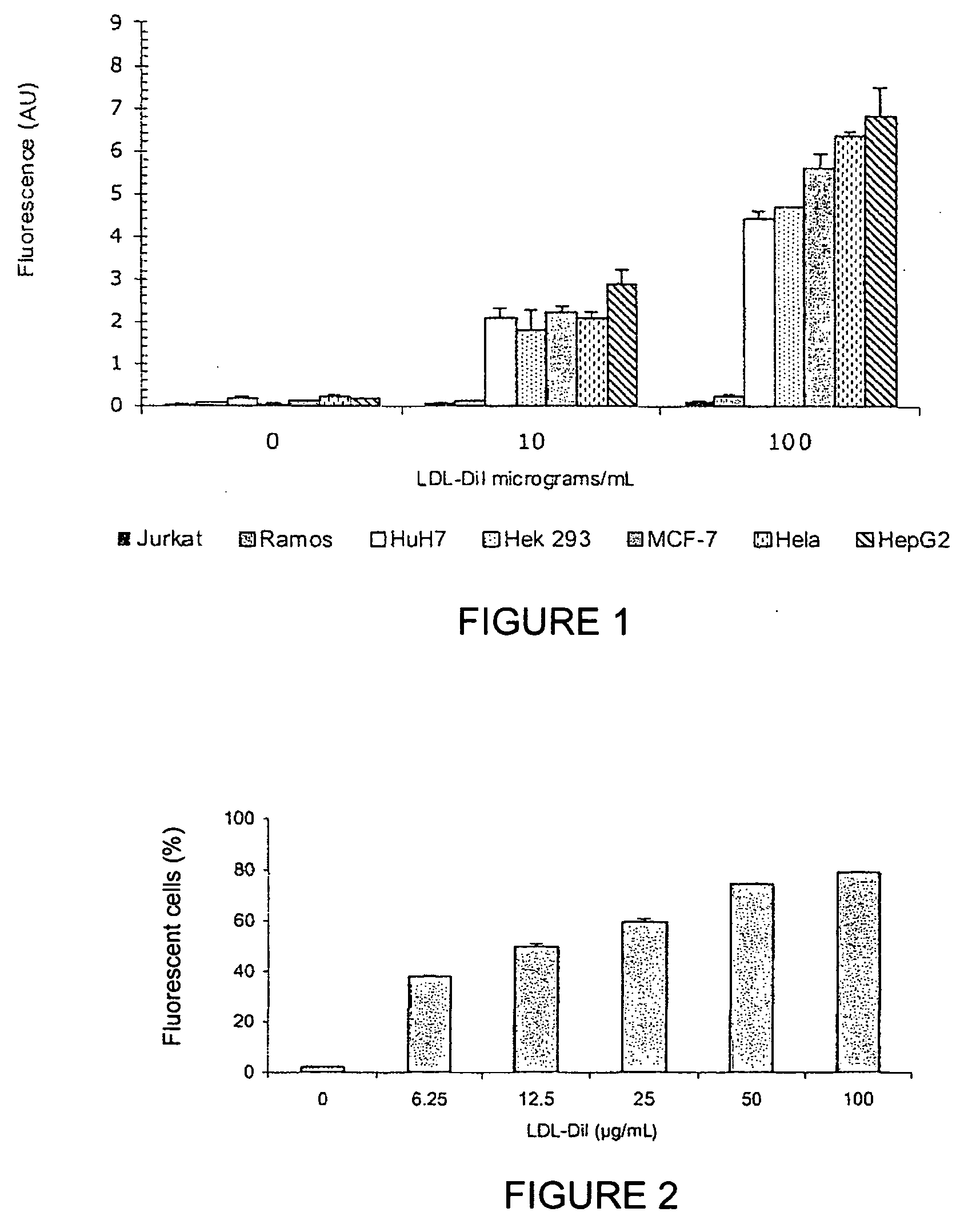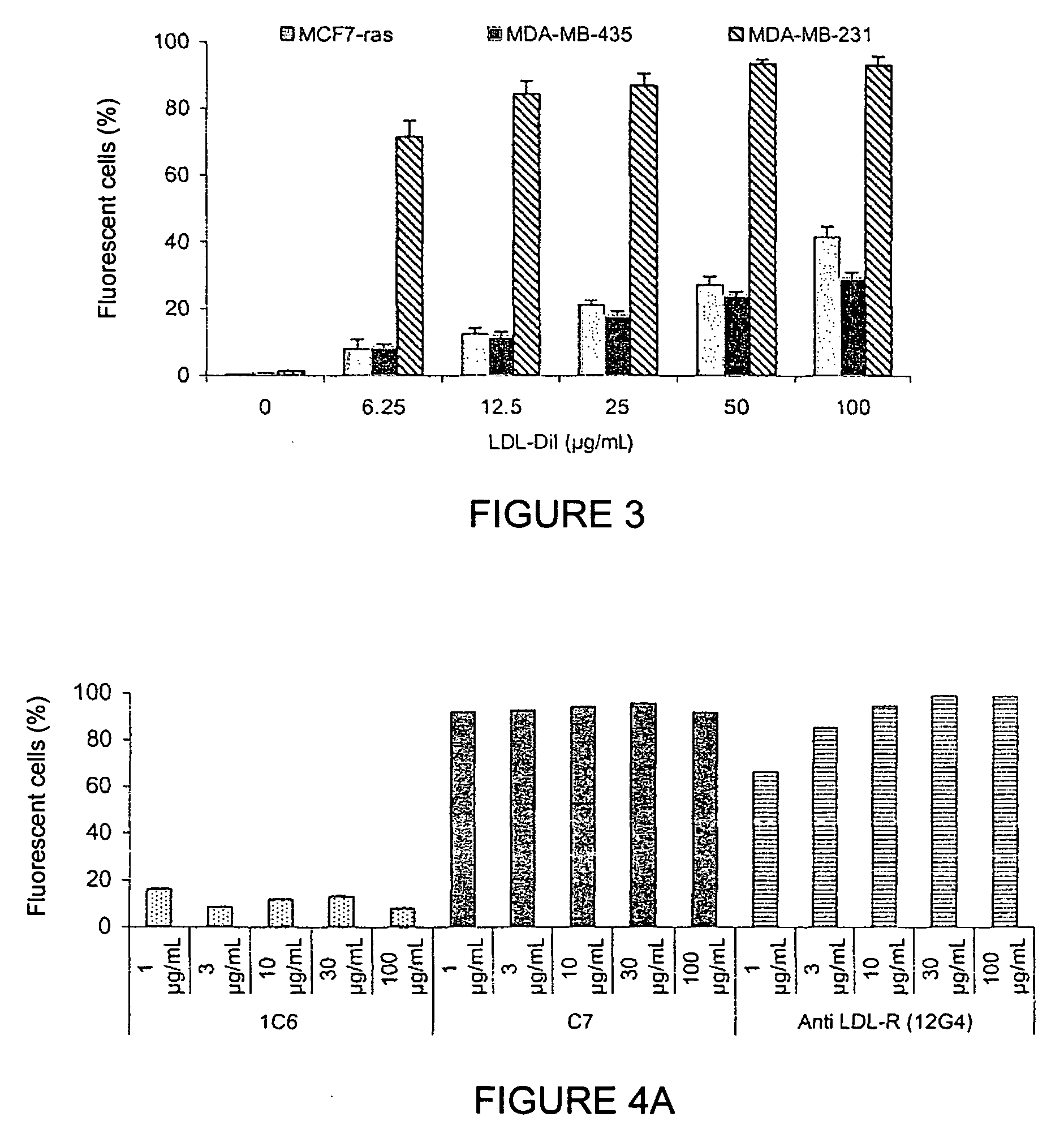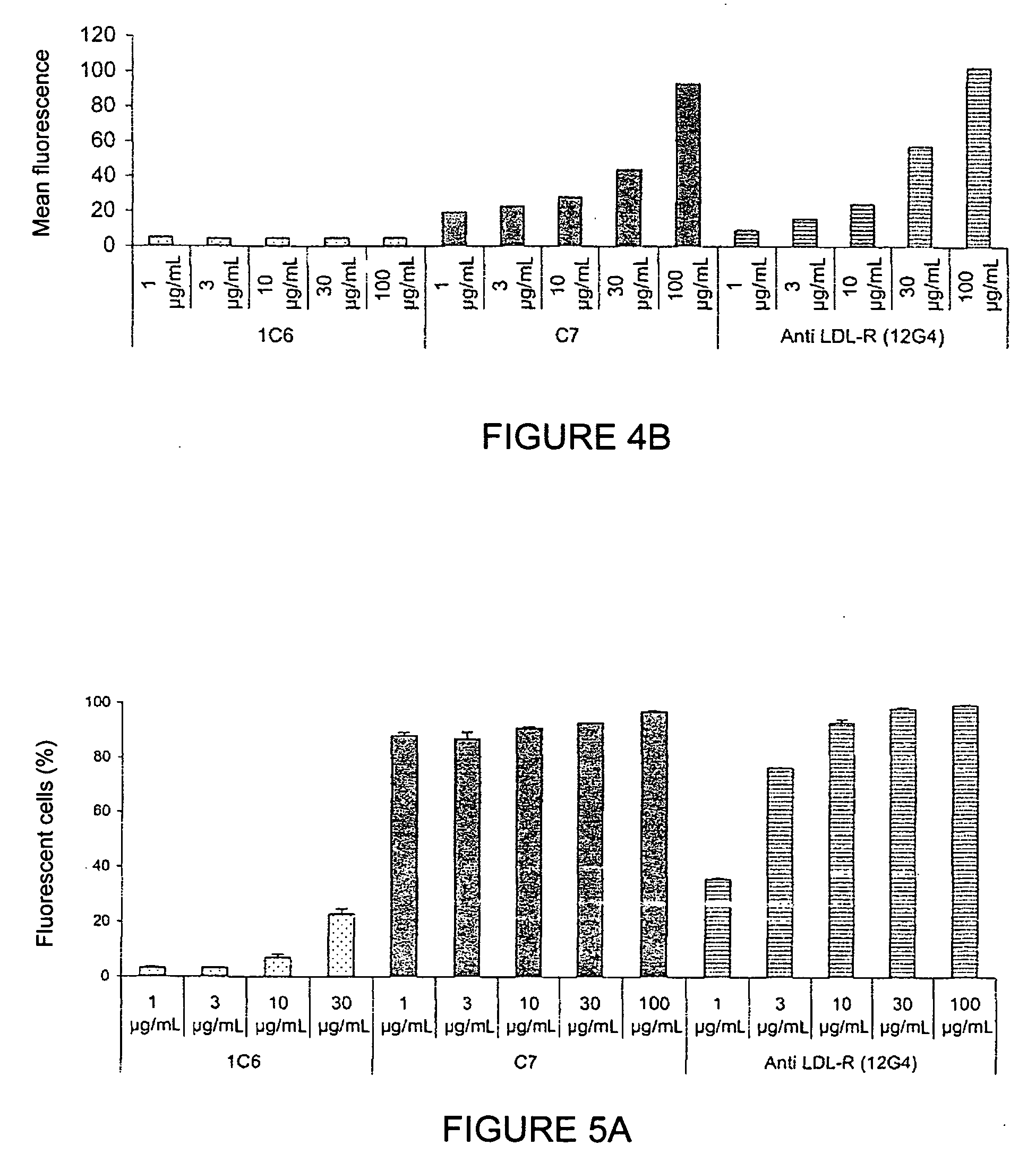Antibody raised against the ldl receptor
a technology of low density lipoprotein and antibody, which is applied in the field of monoclonal antibodies raised against the human ldl (low density lipoprotein) receptor, can solve the problems that the study of ldl-r remains a major challeng
- Summary
- Abstract
- Description
- Claims
- Application Information
AI Technical Summary
Benefits of technology
Problems solved by technology
Method used
Image
Examples
example 1
Production, Selection, and Characterisation of Monoclonal Antibodies Raised Against the Peptide Corresponding to the Sequence of Amino Acids 195-222 in the Human LDL Receptor Sequence (SEQ ID NO: 1)
Selection of the Appropriate Peptide Sequence
[0112]The peptide fragment corresponding to sequence SEQ ID NO: 1 (corresponding to amino acids 195-222 in the human LDL receptor sequence) located in the LDL-binding region was synthesized. The selected sequence SEQ ID NO: 1 was modified (by replacing the cysteine residues with serine residues) in order to avoid the formation of disulfide bonds in the event of an oxidation of the thiol group of the cysteine residues; the corresponding sequence is sequence SEQ ID NO: 17.
Peptide Synthesis
[0113]The peptide was synthesized via the solid-phase synthesis method, on an ABI 433 A-model automatic synthesizer (Applied Biosystems Inc., California, U.S.A.), using a Boc / Bzl strategy on a 0.5-mmol MBHA resin.
Mass Spectrometry
[0114]The molecular mass was det...
example 2
Screening of the LDL-R Expression Level in Cancer Cell Lines
[0125]The following cancer cell lines were screened for LDL-R expression: HepG2, HeLa, MCF-7, Jurkat, Ramos, HuH7, and Hek293, by studying the binding of labelled LDLs (FIGS. 1 and 2). For this purpose, LDLs (density=1.03-1.053 g / mL) were prepared by ultracentrifuging, dialysed in a PBS buffer at a pH of 7.4, and validated via SDS-PAGE under denaturing conditions, and then labelled with fluorochrome 1,1′-dioctadecyl-3,3,3′,3′-tetramethyl-indocarbocyanide (Dil). LDL-Dils were incubated on cells at final concentrations of 0, 10, and 100 μg / mL for 3 hours at 4° C. After washing with PBS, the binding was analysed via FACS (Fluorescence-Activated Cell Sorting) cytofluorometry; that is, the fluorescence of each cell in a given population was measured individually by flow cytometry, on a FACScalibur device (Becton Dickinson). The measured parameters were the FSC (Forward Scatter), SSC (Side Scatter), and the fluorescence emitted a...
example 3
In Vitro Functional Tests of Monoclonal Antibodies Raised Against the Peptide Corresponding to Sequence SEQ ID NO: 1 as Selected in Example 1
[0129]The functionality of the monoclonal antibodies raised against the peptide corresponding to sequence SEQ ID NO: 1 was evaluated by studying the binding of the antibodies to LDL-R at the cellular level (A549 cells and MDA-MB-231 cells); studying the cross-reactivity of the antibodies to LDL-R on C2C12 (mouse), CHO-K1 (hamster), and YB2 / 0 (rat) cells; studying the competition between these antibodies and LDLs on the LDL receptor of A549 cells; studying their internalisation kinetics; and studying the proapoptotic nature of the antibodies.
Study of the Binding of Anti-LDL-R 12G4 Antibodies to the LDL Receptor of A549 Cells
[0130]The binding of the anti-LDL-R 12G4 antibodies to LDL-R was evaluated through quantification of the labelling of A549 cells, grown in the presence of LPDS (Lipoprotein-Deficient Serum) for 24 hours, via flow cytometry (F...
PUM
| Property | Measurement | Unit |
|---|---|---|
| pH | aaaaa | aaaaa |
| pH | aaaaa | aaaaa |
| concentrations | aaaaa | aaaaa |
Abstract
Description
Claims
Application Information
 Login to View More
Login to View More - R&D
- Intellectual Property
- Life Sciences
- Materials
- Tech Scout
- Unparalleled Data Quality
- Higher Quality Content
- 60% Fewer Hallucinations
Browse by: Latest US Patents, China's latest patents, Technical Efficacy Thesaurus, Application Domain, Technology Topic, Popular Technical Reports.
© 2025 PatSnap. All rights reserved.Legal|Privacy policy|Modern Slavery Act Transparency Statement|Sitemap|About US| Contact US: help@patsnap.com



